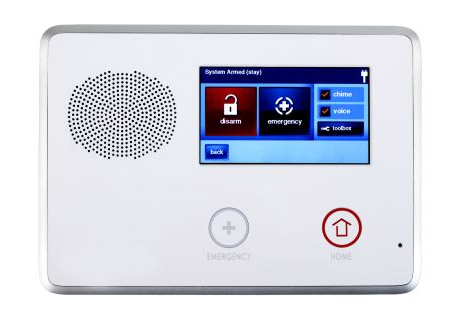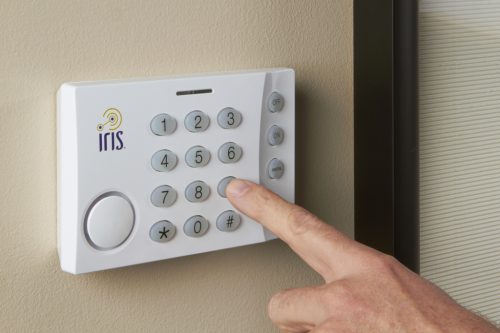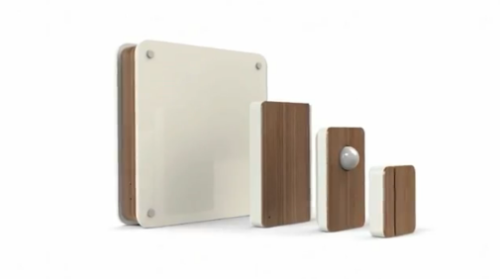Before you even check the proposed specs of the as-yet-unreleased Scout Alarm system, read their mission statement. It’s like they’re in my head!
Here’s what home alarm systems in 2013 do not need, but insist on delivering:
- An installer
- Wires
- A monitoring service
- A monitoring contract (3 year minimum, usually)
- A landline and/or 3G requirement
- Monthly payments of any kind
- A wall-mounted control panel that requires 12v of in-wall power
Here’s what they do need:
- Self-installation kit
- Instant notification of a tripped alarm via text, email, or phone call from the system, not from a third party
- Remote, free, self-monitoring tools
- Web-based setup and configuration
Today the home alarm industry caters to alarm system distributors and dealer/installers. Bottom line is that if you own a home, the alarm manufacturers won’t even talk to you – you’re too far down the food chain for them to sell to. They make no recurring revenue from people who choose to self-install or self-monitor, so there’s no real incentive for them to make systems easy to install, configure, or use.
The end result of having so many people involved in the sales chain of a home alarm system is astronomically high prices for hardware that hasn’t changed a whole lot since the 80s.
There are a few companies making baby-steps toward modernization, and no one’s been more visible in that area than 2Gig with their GoControl system:
2Gig’s GoControl is one of the most beautiful alarm systems out there. It looks great and is easy to use once installed, but the setup process is insanely complicated (check the manual) and to do any sort of remote monitoring or control you need to pay alarm.com, vivint.com, or any number of other monitoring entities upwards of $50 a month. That is just an insane amount of money, and it makes me want to grab people and shake them.
You can buy GoControl systems and accessories from rogue dealers on eBay and at a few sites here and there, but the only official way to buy anything made by 2Gig is to go through one of their dealers, which honestly in this day and age feels pretty consumer-hostile.
If you think that’s an over-exaggeration, check out 2Gig’s latest contest as a great example. They’re giving away $10,000 to the one lucky dealer who finds a golden ticket in their product box! That’s awesome! But what about the homeowner that bought the winning system? What do they get?
They get dick. They get to pay a guy who just won $10,000 a minimum of $50 every month for the next three years.
Lowes’ Iris system is a little better and puts some minor power into the hands of the homeowner. While Iris carries no external monitoring requirement, most of its best features are held hostage behind a $9.99/month subscription fee. Its keypad is straight outta 2005, and instead of just being a “really good alarm system” it feels like Iris is trying to be a “really good home automation system that can also maybe be a decent alarm.”
So that brings us to the crowd-funded newcomer, Scout.
Scout’s system was clearly designed with the user, not the salesman, in mind. It looks like Scout will likely beat Nest to market on this, but I do have some concerns about their approach.
- Despite the three fascia options, every component is kind of ugly. Even glossy renderings can’t save them from looking like Radio Shack project boxes.
- Sensor plates appear to be too large (wide) to attach to any window or door that has rounded or low-profile window casings/moulding around them.
- Open/close sensors are enormous and battery life is stated at 6-12 months, which means they’re probably using AAAs or AAs. Most wireless alarm sensors these days use replaceable lithium ion batteries that last three to five years before needing replacement.
- Scout’s keypads use RFID key fobs to arm/disarm the system which isn’t a horrible idea, but there are no buttons to control the system if you lose your magical key. You’ll also have to physically give someone a fob instead of a code if you want them to be able to access your home when you’re not around. (Or hope they have a smartphone?)
- There’s no display to show current system status. I don’t think homeowners are ready to rely on a browser or smartphone for this. I’m not, anyway!
- With no buttons on the keypad there’s no way to specify if you want to “arm home” (enable only door/window sensors) or “arm away” (enable all sensors), unless there’s a separate fob for each function. You’ll need to start keeping your car keys on your bedside table if you want a control pad in your bedroom.
Despite all those shortcomings (some of which I’m probably wrong about) I’m still super excited by what the people at Scout are doing. I really want them to succeed because they’re trying to fix, from the ground-up, an entire industry that has been horribly broken for years.
Most importantly, I hope it gives the big guys something to think about!




Great idea once again. I’m the sort of person who doesn’t even enjoy locking his doors because I’d like to think that in my neighborhood, I don’t have to. I don’t like fear to motivate my actions, but that preference shouldn’t cause foolishness. I have a baby now, and security is important. But I don’t want to spend tons of money and pay monthly when a system like you described would work.
Hopefully our friends at Nest will get into the home management field and not just HVAC.
We used to have an alarm system and went through a few different alarm companies before I just stopped using it.
The key pad wears out and we were always afraid of setting the alarm off. I absolutely agree with your premise on why the home systems are a waste of money. It’s just like insurance, well some insurances.
I don’t see why the existing Nest products couldn’t easily integrate into a total security system. The main alarm unit could use every Protect and Thermostat as a motion sensor when in armed mode.
They’d need to develop a camera line and door/window sensors and a smart base station. I’d also love to see lights and switches integrated as well. Belkin has already done this and I love the WEMO product line.
Check out these new web smartphone based home monitoring and security systems;
http://www.canary.is
http://www.getpiper.com
They both have temperature, humidity and motion sensors and HD wide angle camera.
What happens if power or phone goes out?